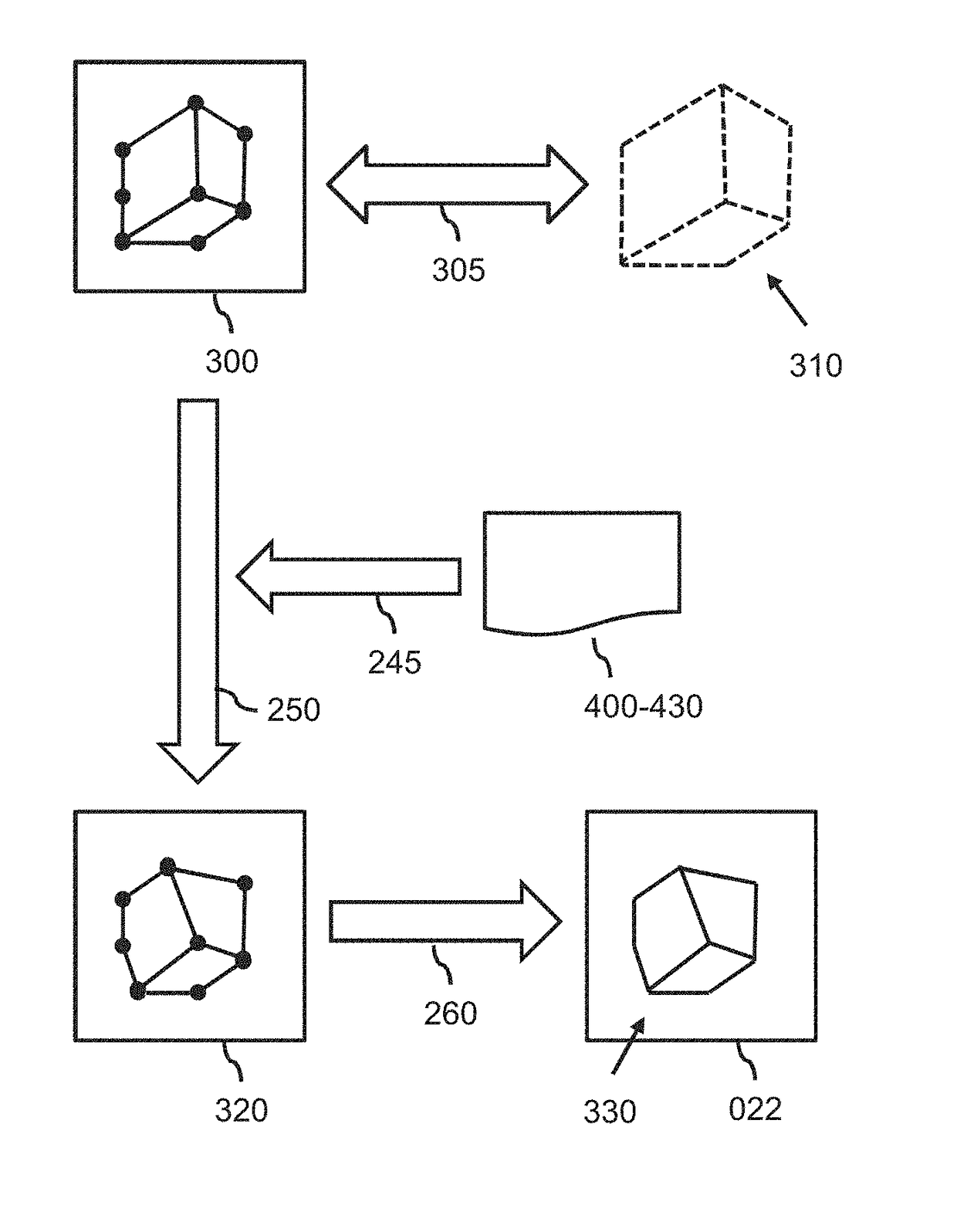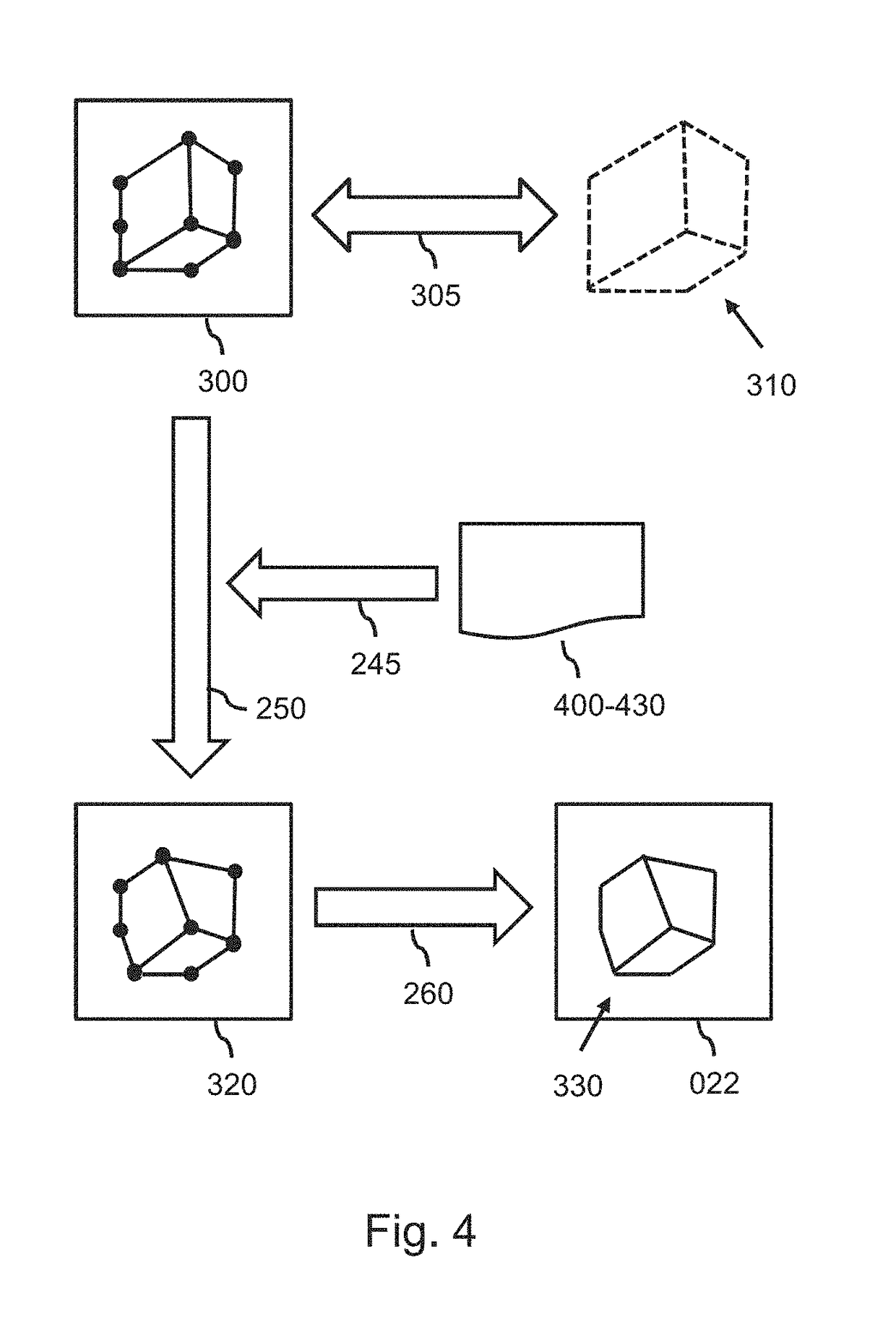Model-based segmentation of an anatomical structure
a model and anatomical structure technology, applied in healthcare informatics, instruments, image enhancement, etc., can solve the problems of insufficiently able to cope with inter-patient and inter-disease-stage variability, and deformable models may insufficiently fit the anatomical structur
- Summary
- Abstract
- Description
- Claims
- Application Information
AI Technical Summary
Benefits of technology
Problems solved by technology
Method used
Image
Examples
Embodiment Construction
[0091]FIG. 1 shows a system 100 for performing a model-based segmentation of an anatomical structure in a medical image of a patient. The system 100 comprises an image interface 120 for accessing the medical image 022. In the example of FIG. 1, the image interface 120 is shown to be connected to an image repository 020. For example, the image repository 020 may be constituted or be part of a Picture Archiving and Communication System (PACS) of a Hospital Information System (HIS) to which the system 100 may be connected or comprised in. Accordingly, the system 100 may obtain access to the medical image 022. In general, the image interface 120 may take various forms, such as a network interface to a local or wide area network, a storage interface to an internal or external storage, etc. Moreover, it is noted that the medical image 022 may be represented by image data, and that the system 100 may access the medical image 022 by obtaining access to its image data. Accordingly, throughou...
PUM
 Login to View More
Login to View More Abstract
Description
Claims
Application Information
 Login to View More
Login to View More - R&D
- Intellectual Property
- Life Sciences
- Materials
- Tech Scout
- Unparalleled Data Quality
- Higher Quality Content
- 60% Fewer Hallucinations
Browse by: Latest US Patents, China's latest patents, Technical Efficacy Thesaurus, Application Domain, Technology Topic, Popular Technical Reports.
© 2025 PatSnap. All rights reserved.Legal|Privacy policy|Modern Slavery Act Transparency Statement|Sitemap|About US| Contact US: help@patsnap.com



